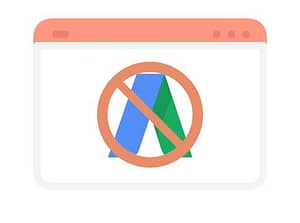SEO stands for Search Engine Optimization. As one of the 10 pillars of digital marketing, it’s an innovative technique that has proven to be essential for companies that want to establish themselves in the online world. But what does SEO mean from a broader perspective?
Well, anyone who wants to rank on Google, for instance, needs to know what SEO strives for. So, considering its importance, we’ve decided to explain everything about this optimization strategy in this post. Today, you will understand what SEO means, how to use the technique, and how to reach the top on search platforms.
For our full guide on how to make a visual brand identity for your business, click here.
What does SEO mean?
SEO is a set of word and image resources used to organically position a web page in the first places of a certain search engine. In short, that means highlighting the presence of your company without paying for the visibility.
Finding it hard to understand? Well, don’t worry – we’re just getting started! By the time you leave here, you’ll have a much clearer understanding of all this.

Let’s simplify things a bit so you won’t get lost in the subject.
SEO strategies can be used in a blog article, for example, to create a more pleasant and reader-friendly experience. Additionally, they can also be used to customize and improve URLs, which are the addresses of the pages you visit.
Google ranks the results of a search based on what it deems relevant to the user – and for this analysis, it evaluates the application of the resources that make up what we call SEO. It’s basically a filter. You see, playing with these techniques is the key to showing Google that your content is genuinely relevant, or at least better than the competition.
But do SEO strategies really work?
Yes, they do. That’s why we are offering you an in-depth explanation of what SEO means. We really want you to be able to use this technique to achieve success within search engines.
However, keep in mind that SEO is a gradual process that needs to be studied continuously and applied properly to succeed over time. The method does not guarantee spontaneous results, as it depends on some other factors. How about learning a bit more about this below?
What are organic searches?
When you search for something on Google, you are presented with a long list of articles related to the keyword – the word, sentence, or question that refers to what you are looking for – that you used.
In this list, the first posts are usually paid advertisements, meaning that the company invested financially to reach that position. But those are not important here: it’s the articles that appear just below these ads, the result of organic searches, that interest us.
Google’s algorithms have determined that these articles are the most relevant for the keyword used. In case you’re not familiar with the term, algorithms are sequences of rules designed to solve problems – or, as Neil Patel, co-founder of NP Digital and one of today’s top marketing professionals, describes them, “schematic steps that perform a task”.
Ultimately, this is where SEO comes into play. It shows search engines that your content provides the solution to the user’s problem; and if you succeed at that, the notoriety given to your products and services will skyrocket.
You might also like: How many people use social media?

What are search engines – and how do they work?
To understand SEO, it is necessary to understand how search tools work in the first place.
One of the ways to facilitate connections between people around the world was the creation of search engines. These digital engines scour the entire internet, selecting, organizing, and providing quality content to users.
To do this, they use algorithms to rank the best and most relevant pages for a particular topic.
Today, it is impossible to talk about search engines without mentioning Google, the leading search engine today. The tool uses a robot that finds the most relevant topics, and this is done in three stages:
TRACKING STAGE
During crawling, Google’s bot, the company’s robot, identifies new pages to add them to the platform’s results list. For this, robots use algorithms to determine prioritization and indexing frequency.
INDEXING STAGE
In this stage, Google’s bot analyzes and processes all new pages – as well as edited ones – thus placing them in its index. Additionally, any information related to the website’s content, such as the publication date, title, region, performance, description, and data, is indexed.
SEARCH
The third stage consists of the actual search, where the user looks up a keyword. If you haven’t quite gotten the idea yet, these searches do not occur on the internet itself but in an index provided by the search engine.
Since updates take time to occur within these search engines, it is possible to find pages that no longer exist or have undergone changes.
If you want to position your business on the podium of Google, there’s no escaping it; you’ll need to invest in SEO techniques right away. But that doesn’t necessarily mean you have to dedicate yourself to learning the technique – you can leave it to us, marketing professionals who can pinpoint the exact strengths and weaknesses of your investment. While you take care of your business, we’ll ensure that it achieves the best results in the digital world.
Let’s talk!
The very thing we value the most we want to give you for free: strategy.
Schedule a free online meeting with us! Let’s get to know you better, discuss your ideal strategy live, and present our proposal to execute it. You will already leave the first meeting armed with free techniques you can practice to improve your results quickly.






